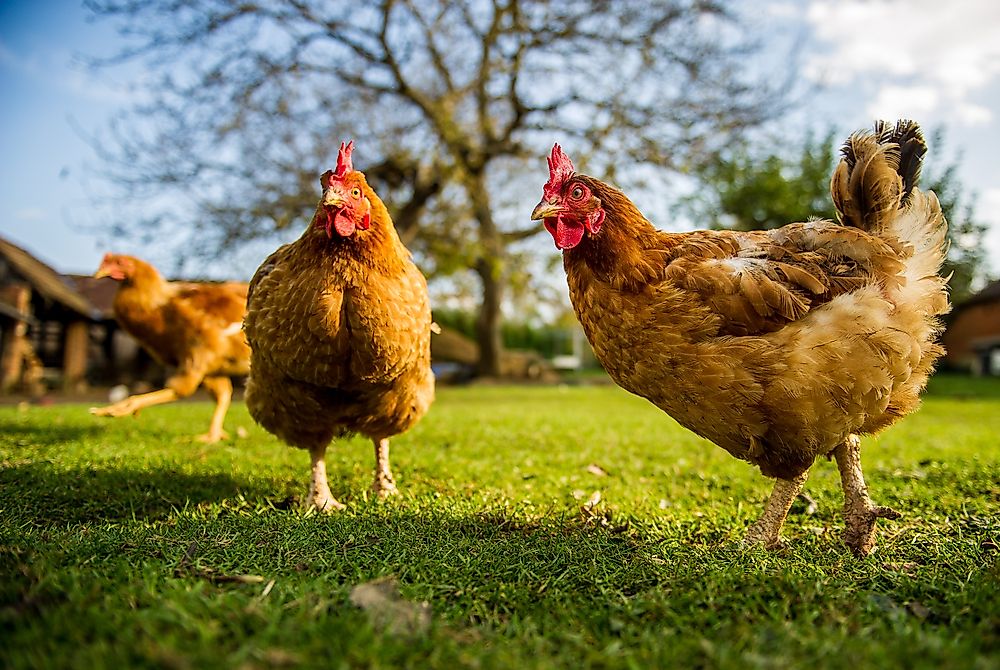How Many Chickens Are There In The World?

Scientifically it may prove difficult to give the exact number of chicken in the world. The information can only be scantly gathered since there are small private farms in remote villages which the researcher may not even be aware. The short lifecycle of the chicken may also pose another challenge. However, in 2002, the United Nations FAO estimates that there were 19 billion chickens in the world, with China having the largest number, followed by the US, Indonesia, and Brazil. By this calculation, for every person in the world, there were three chickens. By 2009 the global chicken population was estimated to have climbed to 50 billion.
Chicken Uses Around the World
The chicken has been a domestic fowl for over 8,000 years, with the first batch kept in Asia and Europe majorly for cockfighting. There are hundreds of species of chicken found on every continent. Chickens are kept by humans to provide eggs, meat, and feathers, however they are also used in religion, mythology and traditional festivals.
The largest percentage of chicken is artificially generated, although there are traditional rearing methods common in Africa and Asia. Wild chicken is rare. Common classifications are broilers, which are bred for white meat, and layers, which are female chickens kept for laying eggs. Each lays an average of 300 eggs per annum. When they grow old, they are slaughtered for meat. It is estimated that every year over 40 billion broilers are bred and consumed mainly in the US and China, with 3 billion reared as layers for egg consumption and hatching.
Factors Contributing to the High Number of Chicken in the World
The average American today consumes more chicken than he did a quarter-century ago. Technology has improved to meet this growing demand. Modern artificial incubation machines which have assisted hatching of millions of young chicks. Naturally, a hen can sit on just 10 to 12 eggs. With an incubation period of only 21 days, artificial incubating machines can be used as many as 16 times a year with a hatch rate of over 85%. Automatic hatcheries have made it less human labor intensive making more people venture into the production.
There have been improved varieties of chicken that are resistant to diseases and other ailments. Science has also come up with better chicken medication that increases mortality rate. To rear chicken, one does not need as big a space as for many other animals bred for consumption. Increased demand for chicken for both eggs and meat has led to the innovation of robust hatcheries. Some people rear them for pest control and for scientific or educational value. In third world countries, it is easy to rear them traditionally since you just need a small space and small amounts of food.











